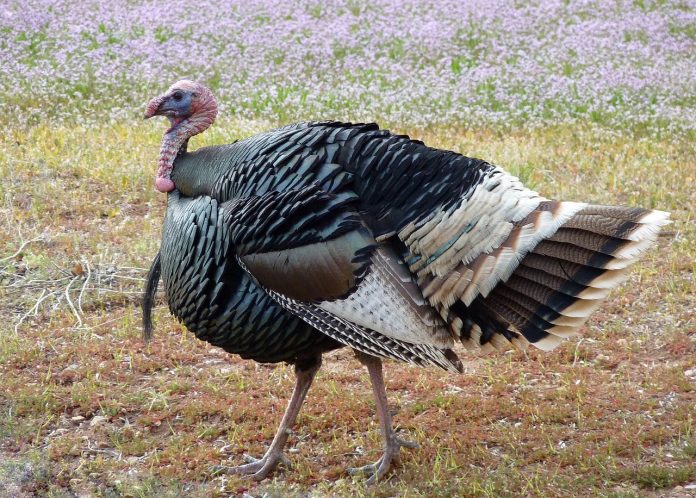Timeline — two weeks ago. Dawn is still just a coming thing, a daily beginning that will brighten the eastern horizon following a slight but encouraging tint of red.
It’s been unusually cold, especially in the early part of each day, a reminder perhaps, that winter is still able and willing to spread a shiver or two across the still bare woodlot.
It’s the time of day when wild turkeys get fidgety, maybe tired of their overnight perch, maybe hungry, maybe lonely.
And indeed, the huge gobbler locked on the heavy branch of an aged white oak rocks just a little as he blinks the sleep away in his effort to scan the floor of the forest below.
We’ll call him Tom, a name that suits this 4-year-old bird, a mature and wise old-timer within his breed. Tom looks down and as the red glow begins to turn the black of night into the shadows of morning, and at first he sees hardly anything.
He spots movement, then more as the ladies in the flock begin to wander. He sees even more turkeys in his tree and on tree limbs nearby.
If Tom could count, he would see 41 other wild turkeys, a winter flock that hangs together from first snow till last. One by one, they fly down to join the others.
Sounding off
Tom waits until the trees are empty and all the while he looks and listens for danger.
One of the birds below voices a soft yelp. Another purrs like a kitten and another answers with her own five or six clucks.
Tom sounds off with an instinctive, raspy rattle. His voice is a big as he is and it bounces around the woodlot for all to hear.
A grey squirrel stops moving and looks for the source. A passing crow looks for friends with its own call and Tom responds to the sound with another gobble.
He doesn’t know why he responds, it just happens.
Finally, a couple noisy flaps followed by a steep glide and he’s down for the day. He is the largest bird in the flock and he’s somewhat of a bully.
Henrietta
He spots Henrietta, or maybe it’s one of many Henriettas, he’s not sure. Regardless, we’ll call her Hen. He approaches Hen, but he doesn’t know why, it just happens.
Hen sees him as just another turkey, just like she has all winter, and she whacks him a good one with her needle-sharp beak. Make no mistake, wild turkeys are nasty creatures and the term pecking order holds true here.
Timeline — two weeks from now. Mornings come quicker now, the chill is almost comfortable, and the woodlot is much the same except that a touch of green shows itself.
Nesting
The winter flock is pretty much dispersed and small flocks are predominant. Now when Tom looks down from his perch he sees or hears just a handful of birds with Hen. He likes the small group and they like Tom.
It’s nesting time now and the attitude is a lot more cordial. A lot more.
Hen and her like-minded gang instinctively prepare their nests, each to their own, just a scratched out spot in the understory, hardly hidden but well away from the others.
Each will lay one egg each day, or nearly every day, until her urge to fill her nest lessens, about two weeks or when her nest holds about a dozen eggs.
If they are to hatch the eggs Hen lays need to be fertilized and that’s where Tom comes in. Hen flies down from her overnight roost and begins to feed along with the flock. Tom then flies down and begins looking for Hen.
Now, when Tom finds her and approaches her Hen is in a much better mood and things progress rather quickly.
Later in the morning, Hen and the others will wander off to their respective nests and thus the nest begins to fill.
And of course, this is spring wild turkey season and why only the gobblers are hunted and why hunters are out of the woods by noon during the mating weeks.
If a tom is harvested by a hunter, another tom will fill the gap. Hen won’t care or even notice. She will complete her nesting, hatch a brood and do her best to keep them out of harm’s way. Tom’s job is pretty much short term.













